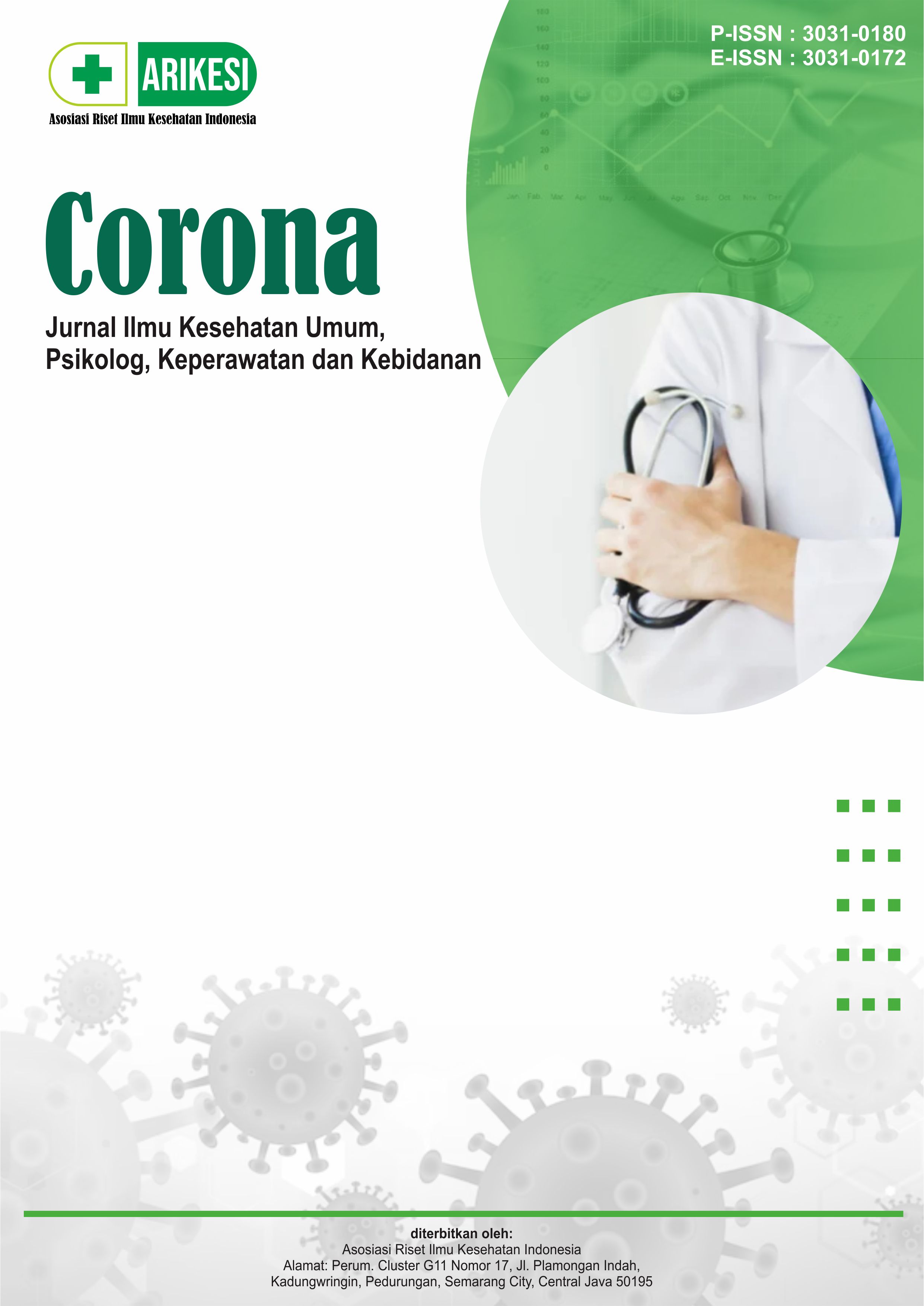Penerapan Terapi Water Tepid Sponge Pada Anak untuk Mengatasi Demam di Charitas Hospital Palembang
DOI:
https://doi.org/10.61132/corona.v2i3.549Keywords:
Water Tepid Sponge, Children, FeverAbstract
Fever is a symptom of all types of diseases, both infectious and noninfectious. Fever is also a symptom that often occurs in children. Children's body temperature defenses are still weak so they are very susceptible to infections, fungi and viruses. Fever can endanger a child's safety if treated quickly and appropriately and can cause seizures. Normal body temperature is 36.50C-37.50C. If the body temperature is more than 37.5 then a water tepid sponge compress can be applied. Able to apply a water tepid sponge compress to reduce fever in children. Able to determine body temperature before and after being given a water tepid sponge compress. In this study, a descriptive case study was used, three research subjects who received the fever-reducing drug paracetamol and were given water tepid sponge compress intervention to reduce fever in children. The data collection instrument uses an observation sheet. Based on the results of the study, it showed that children who were given fever-reducing medication and compressed water tepid sponge were used and for the three respondents for three days, the average result on the first day was 1.50C, on the second day the average was 1.50C. .3 0C and on the third day the average was 0.30C. Children who were given fever-reducing medication and given water tepid sponge compresses experienced a decrease in body temperature. Hospitals are expected to maximize the application of warm Tepid Water Sponge compresses to children to treat fever as a non-pharmacological therapy.
Downloads
References
Azijah Izattul, A. R. A. (2020). Pertumbuhan dan Perkembangan Anak. Lindan Bestari.
Efendi, S. (2023). Buku Ajar Keperawatan Anak. Omera Pustaka.
Iqra, I., Salaka, S. A., & Putri, R. K. (2023). Penerapan Tepid Sponge pada Asuhan Keperawatan Pasien Hipertermia di RSUD Kabupaten Mamuju. MAHESA : Malahayati Health Student Journal, 3(2), 470–484. https://doi.org/10.33024/mahesa.v3i2.9567
Kesehatan, K., & Indonesia, R. (2020). Profil kesehatan Indonesia 2022.
Kristiyaningsih, K., & Nurhidayati, T. (2021). Penurunan Suhu Tubuh Pada Anak Demam Dengan Water Tepid Sponge Di Puskesmas Pringsurat Kabupaten Temanggung. Holistic Nursing Care Approach, 1(2), 60. https://doi.org/10.26714/hnca.v1i2.10989
Lusia. (2015a). Mengenal Demam dan Perawatannya Pada Anak. Airlangga University Press (AUP).
Lusia. (2015b). Mengenal Demam dan Perawatannya Pada Anak. Airlangga University Press.
Maghfuroh Lilis, S. H. (2020). Deteksi Dini Tumbuh Kembang Anak Usia Prasekolah Usia 3-6 Tahun. PeNERBIT CV. Pena Persada.
Nugraha, K. W. D. (2022). Kementerian Kesehatan Republik Indonesia Profil Kesehatan Indonesia 2022.
Sakti, W. T. (2023). Buku Ajar Anak Keperawatan. Mahakarya Citra Utama.
Wulandari, N. Arti. (2020). Buku Ajar Pertolongan Pertama Pada Anak Sakit.
Wulandari. (2016). Pertolongan Pertama Pada Anak Sakit. Media Nusa Creative.
Downloads
Published
How to Cite
Issue
Section
License
Copyright (c) 2024 Corona: Jurnal Ilmu Kesehatan Umum, Psikolog, Keperawatan dan Kebidanan

This work is licensed under a Creative Commons Attribution-ShareAlike 4.0 International License.





